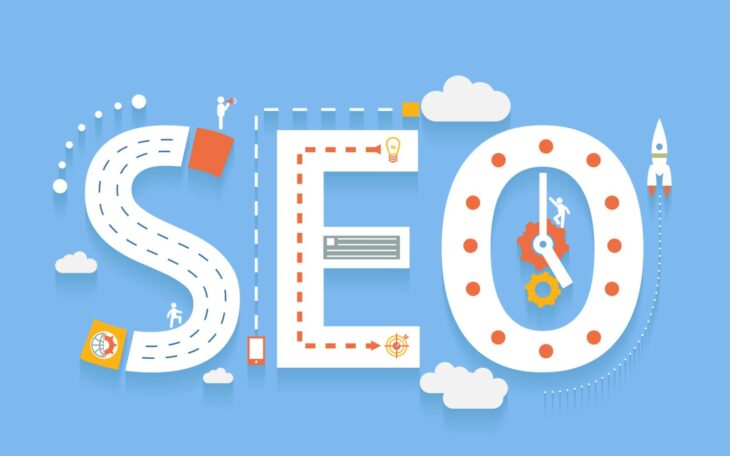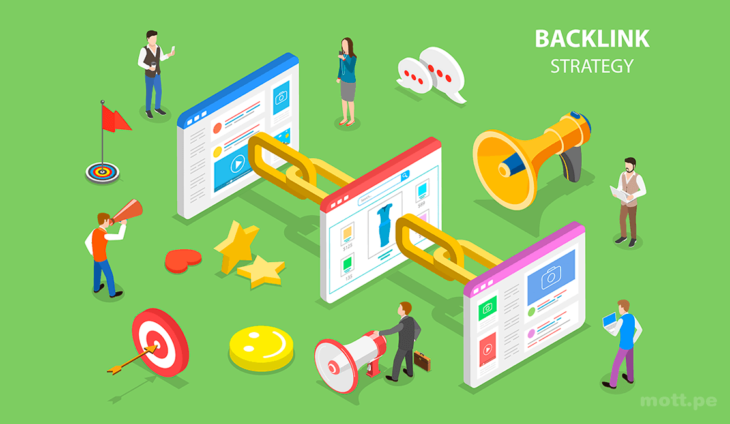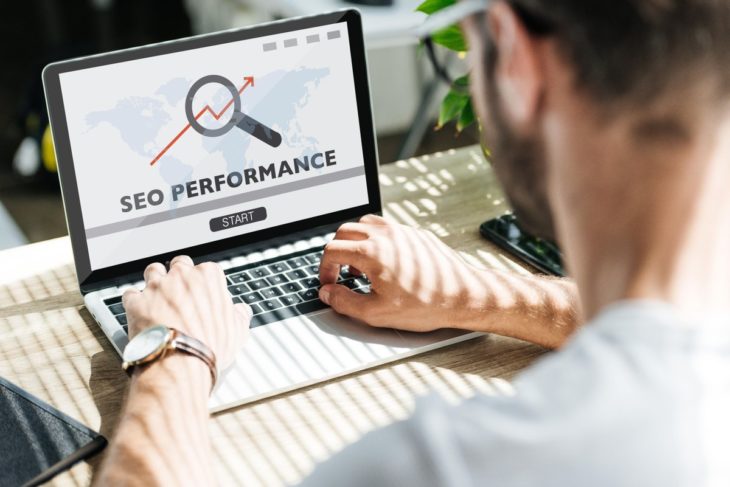SEO is an interesting digital marketing tool – And one of the most powerful, yet most misunderstood and often underutilised.
Search engine optimisation, or SEO as it is more commonly known is the act of optimising your website/video/content/product with the aim of ranking as high as possible in the Google, Bing, YouTube and Amazon search results.
SEO works in many ways – The Google algorithm, which is powered by Rankbrain, helps sort out how to rank websites.
Whilst it is believed there are over 1000 pieces that make up the Google algorithm, we don’t know them all, but there are a few we do know.
Let’s start off a littler counterintuitively and cover what we know the algorithm does not like.
Over optimisation / Keyword stuffing – This is when you mention your keyword on a single page too many times.
There used to be ratios that were used such as no more than 4-8% (depending on who you asked) or just not mentioning your keyword more than 4-5 times on a page.

Source: Medium
Making your keyword bold & italic were also suggestions to help improve this.
Previously you could use your keyword and variations of it across a single page many, many, times and get good rankings, now Google doesn’t like that – Why? Because it provides a poor reading experience to the person reading your website page/content.
You must always write your content for users, writing the same thing many times over makes no sense and provides zero value.
Spun content – This is one of (probably) the most annoying and worst things you can do and with good reason – Google started to penalise it.
Spun content is when you use a machine/software tool to rewrite paragraphs of text to get different versions of the same piece of content just written from a different angle.
Gone are the old SEO days of “just say the same thing 3-4 different ways” – Users want real content, they want to consume and saying the same thing over and over just in a different way makes no sense.
Always write for you user, provide them everything they need in a clear and easily digestible manner, use other things besides text such as images, video, infographics and headers and what not to ensure your content is engaging and stands out and actually gets read by your website visitor.

Source: Digital Marketing Institute
Poor irrelevant backlinks – This was one of the big reasons for the Google Penguin update.
Google realised that people could manipulate the search engine rankings by just pointing a ton of shady backlinks to their website.
Google hated this.
So, now Google understands backlinks better, it wants quality and relevant backlinks pointing to your website.
Think about it, if you are a retailer of candles for example, then why do you want backlinks from gambling or adult websites – What value and relevance are they?
You would want backlinks from other similar sites through joint ventures, from arts and craft websites, from home styling magazines and from hobby websites as they would like to be the most relevant to what you are doing.
Cloaking – This is an old black hat SEO technique which attempted to show one version of a website to users and another optimised version to Google – With the aim being that users wouldn’t see the over optimised content and the website would rank higher – As Google would see it.

Source: Entrepreneur
Just simply provide your content in an easily digestible way that your users will love, give a great user experience then there’s no reason to have to try and do anything manipulative or try to trick Google.
Now let’s take a look at some of the things Google does like!
Fresh, well written and engaging content – Google wants to provide the best, freshest and most relevant and trustworthy content to the people searching for it.
Write your content for your users.
As we covered earlier, if there’s one thing that Google hates, its poorly written content that makes no sense and adds no value.
Use short snappy headlines. Use images to paint a picture, they say a picture paints a thousand words! Use video, this takes the pressure off reading and allows you to really connect with your website visitor and why not use infographics?
People love infographics. They provide short snappy key facts and information at a glance and can be really fun as well.
Infographics also help with your SEO as other websites can link to them or embed them within their website generating you some nice relevant backlinks.

Source: Mott
Quality backlinks – Good hates spam irrelevant backlinks.
Backlinks from link farms that are just full of keywords linking to other sites or from gaming or illegal streaming sites are a big no-no.
It can be very difficult to get backlinks, something an SEO agency like ALT Agency does for their clients, but you can do it and there are a few easy ways to get backlinks.
Firstly, you can get backlinks by producing brilliant content that people can’t help but share and link to.
Whilst that does sound a bit vague, producing content that is different to the norm is what really stands out.
Everybody produces 750-word blog articles – for some reason – and none of them really convey any value.
Think of a website like Wikipedia, look at the depth they go into. They have a table of contents, images, summary and also cover every aspect of a topic including linking off to relevant topics that are mentioned within the article.
Produce content that no one else is doing. Don’t write about “the 3 Christmas gifts for 2024” write about “83 timeless Christmas gifts that never get old”

Source: Pinterest
Go 2 steps further than your competition and really deliver on content.
You can then splinter your content off into sub topics and even turn your content into video, audio and infographics – All of this, when distributed properly, will increase the chances of you attracting backlinks and more shares of your content.
A well-structured website – Structure your website properly.
Use keywords in your page URLs and have a hierarchy to your website – Don’t keep it all on one level.
For example, you may sell computers and your domain may look like this:
Mycomputerbusiness.com/computers-0987.htm
Which doesn’t really tell you much.
Something like
Mycomputerbusiness.com/laptops/dell/ is far more descriptive and will help Google understand the levels of your websites, categories, products and brands.
Great linking between pages – This, for some reason is often neglected!

Source: Twipu
This comes back to the Wikipedia example, if you are writing a blog post about different types of men’s t-shirts for example, and on your website one of your product ranges is men’s t-shirts, then link off naturally from your content to your range of men’s t-shirts which are on your website.
You can do this throughout, whenever you mention your brand name you can link back to your homepage, when ever you mention services you can link to your service page or specific service, when ever you say contact us you can link to your contact us page.
Internal interlinking is one of the quickest SEO wins and one of the easiest ways for Google to crawl, index and understand your website.
Summary
Remember Google can piece all of this together. Using metrics from Google analytics and the Google search results, Google will know:
- How many people clicked on your search listing
- How long they looked at your webpage
- How many other pages they looked at on your website
Using this data Google can see in real time how the world interacts with your website.
If they are clicking a search result and immediately clicking back to the search results – Google could see it as not relevant and down rank that page.

Source: AdobeStock
If people are only looking at your website for a few seconds that’s another metric Google could look at and down rank you. This could be because the site likes untrustworthy, wasn’t what the reader was expecting or is just simply too overwhelming for the visitor.
Enjoy your SEO journey – it really could transform your business.
